#fred aldrich
Explore tagged Tumblr posts
Text
A singing mechanic got knocked on the head in the year 1912 and woke up in King Arthur’s Court. ("A Connecticut Yankee in King Arthur’s Court", flm)

#nerds yearbook#time travel#1912#camelot#connecticut yankee in kinf arthur's court#edmund beloin#mark twain#tay garnett#bing crosby#hank martin#rhonda fleming#cedric hardwicke#king arthur#william bendix#murvyn vye#merlin#virginia field#morgan le fay#joseph vitale#henry wilcoxon#sir lancelot#richard webb#sir galahad#alan napier#julia faye#mary field#ann carter#eric alden#fred aldrich#al bain
5 notes
·
View notes
Text

Bad movie I have Bell Book and Candle 1958
#Bell Book and Candle#James Stewart#Kim Novak#Jack Lemmon#Ernie Kovacs#Hermione Gingold#Elsa Lanchester#Janice Rule#Philippe Clay#Bek Nelson#Howard McNear#The Brothers Candoli#Fred Aldrich#Leon Alton#Monty Ash#Joe Barry#Wolfe Barzell#Willie Bloom#Gail Bonney#Don Brodie#Conte Candoli#Pete Candoli#Dick Crockett#Jack Deery#Robert Haines#Jimmie Horan#James Lanphier#Perk Lazelle#Guy Lux#Ted Mapes
9 notes
·
View notes
Text
BALL & THE BUTCHERS!
The Butchers & Meat Markets of the Lucyverse

Before supermarkets and online ordering, consumers visited local buthers and meat markets to shop. Here’s a look at the butchers of the Lucyverse!
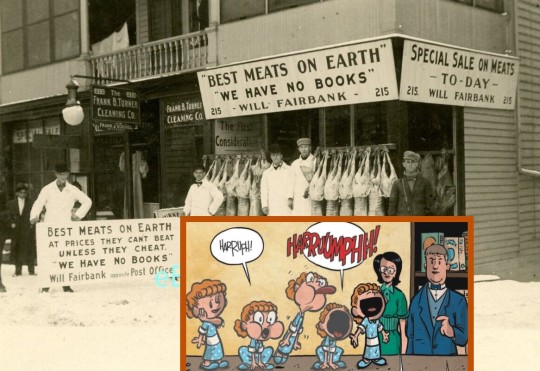
Lucille Ball had a huge imagination when she was a child in Jamestown NY. In order to attempt to control her daughter, her mother made a deal with the local butcher for Lucy to run up and down the street between his shop and their home. It was in his butcher shop that Lucille first made her entertainment debut. In her autobiography, Ball shares details of her first performance on the butcher's counter. Lucy loved to dance and twirl for them, as well as giving her rendition of a jumping frog. She would stick her tongue out and croak. Customers would give her some pennies or a sweet treat to show their appreciation.

In 1942 Lucille Ball was the subject of a newspaper article titled “Conversation in the Kitchen” by Susan Thrift. The article details how the wartime homemaker can save money and conserve resources.
“If you have a freezing unit in your refrigerator, you can buy meat for the week. You’ve probably learned that you can depend much on a reliable butcher and standard brands. For the rest, remember what your mother taught you about the purchase of meat:”

“Valentine’s Day” (1949)
Katie the Maid (Ruth Perrot), is sweet on Mr. Dabney the butcher (Hans Conried), and Liz (Lucille Ball) offers to help. But when Liz's Valentine to her favorite husband gets switched with her check to pay the butcher's bill, Mr. Dabney gets the wrong idea.
Katie says she has a written a Valentine poem for Mr. Dabney the butcher. Liz calls him “old heavy thumbs”.
KATIE: “Some people may have better beef, but his liver’s good. And no one has oxtails and pig’s feet like him!”
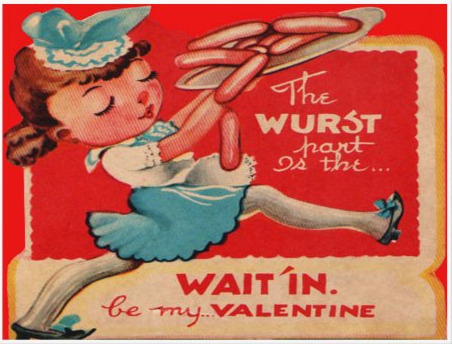
Mr. Dabney reads the Valentine aloud:
“If you’ll be mine, then I’ll be thyne. You set my heart a-quiver. Say you’ll be my Valentine, And send two pounds of liver.”
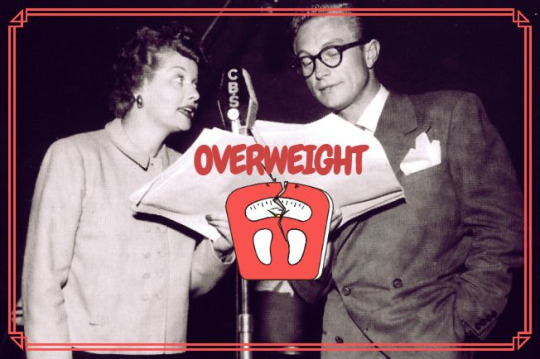
Hans Conreid also played Mr. Dabney the butcher in “Overweight” (1949) where a dieting weigh-in is held at his butcher shop.
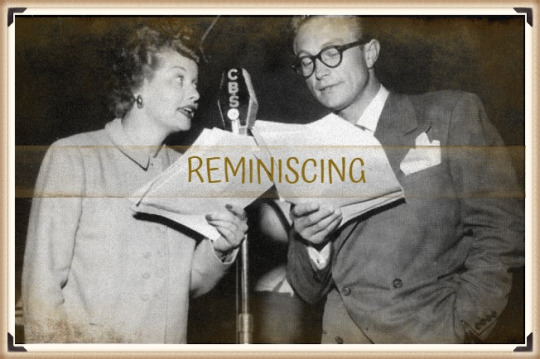
Mr. Dabney returns in “Reminiscing” (1949), a re-dramatization of “Valentine’s Day” as part of a “My Favorite Husband” retrospective episode.
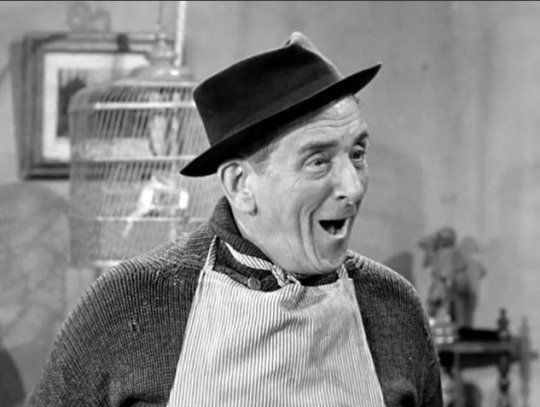
When the "Valentine’s Day” script was made for television in 1952 in “Lucy Plays Cupid”, Mr. Dabney the butcher, played by Hans Conried, became Mr. Ritter, a grocer, played by Edward Everett Horton.
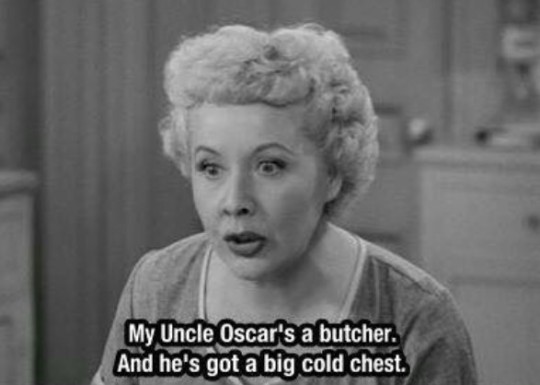
“The Freezer” (1952)
Hoping to save money, Lucy and Ethel purchases a walk-in freezer from Ethel’s Uncle Oscar, a butcher. When Lucy hears Ethel say that he has a “big cold chest,” Lucy drily replies, “Why don’t you knit him a sweater?”
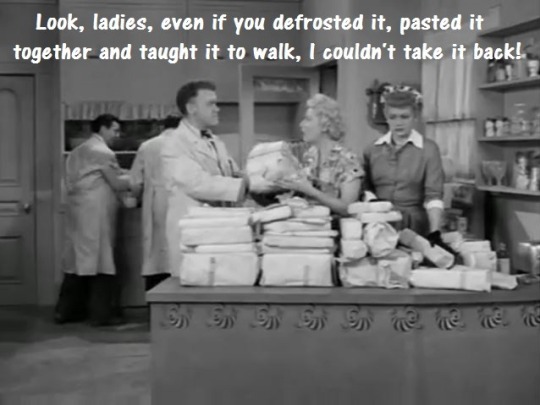
After buying the freezer, they buy the meat to fill it at 69 cents a pound. Lucy over-orders two sides of beef from Johnson’s Meat Packing, a wholesale butcher. Lucy tells Ricky that bacon costs 75 cents a pound. The girls end up ordering 700 pounds of meat for a total of $483! Lucy immediately demands they take it back.
DELIVERY MAN: “Look, ladies, even if you defrosted it, pasted it back together and taught it to walk, I couldn’t take it back!”

To shift some of the meat, Lucy and other stake out the local butcher shop, stashing the meat in a baby stroller.
LUCY (to a customer): “Are you interested in some high-class beef? Are you tired of paying high prices? Do you want a bargain? Tell you what I'm gonna do. I got sirloin, tenderloin T-bone, rump, pot roast, chuck roast, oxtail stump.”

Fred Aldrich plays the butcher who is none too happy about Lucy and Ethel poaching his customers.

A December 1952 Philip Morris cartoon ad starts with the butcher delivering a side of beef to Lucy and Ethel, inspired by “The Freezer”.
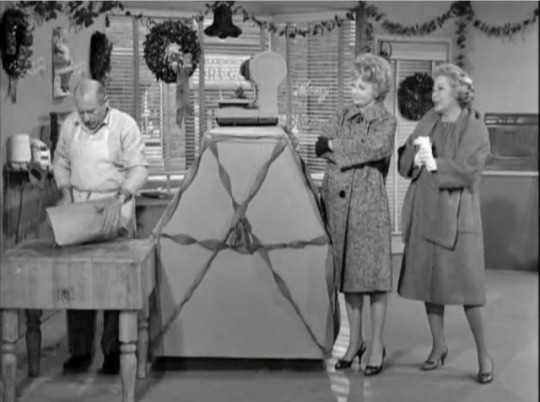
“Together for Christmas” (1962)
The holiday episode opens with Lucy and Viv at the butcher shop, where Ernie the butcher (Joe Mell) is wrapping up Lucy’s Christmas turkey, even though Viv's family traditionally has a goose.
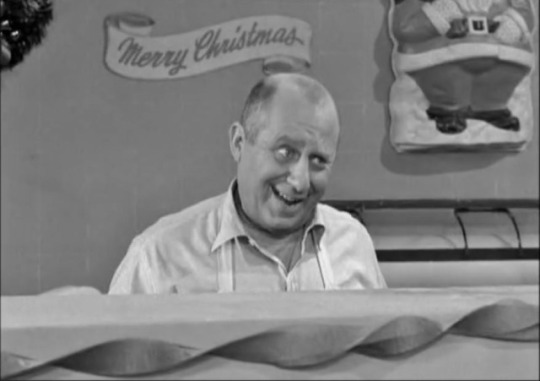
Ernie the butcher jokingly suggests stuffing the turkey with a goose!
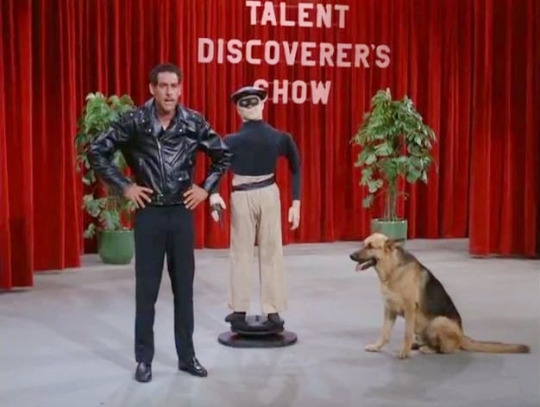
“Lucy and the Plumber” (1964)
Lucy’s first talent discovery was made in Mr. Krause’s butcher shop when she saw his German Shepard Beauty “howl like the Beatles” when Mr. Krause (Tom G. Linder) played the harmonica.

”Lucy and the Great Bank Robbery” (1964)
Reading The Danfield Tribune, Viv notes that Oscar the butcher has a special on rump roast. This may be a throwback to Ethel Mertz’s Uncle Oscar the butcher.
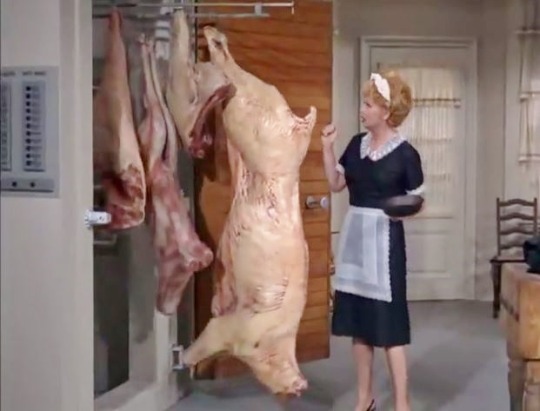
“Lucy Gets Her Maid” (1965)
When Lucy and Viv take jobs as maids for a wealthy philanthopist, they realize that they not only have to prepare and serve the meals, but they have to act as their own butcher, too!
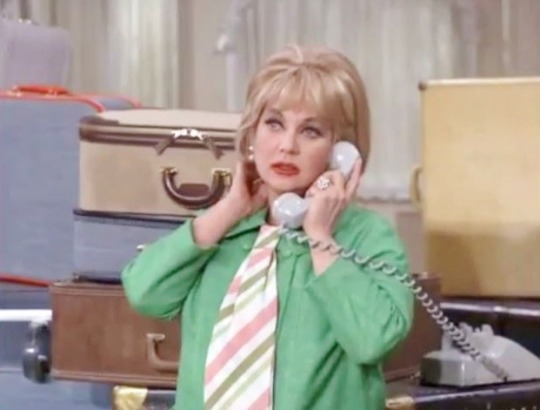
“Lucy and the Old Mansion” (1965)
A wrong number on the telephone keeps trying to reach Irving's Meat Market.
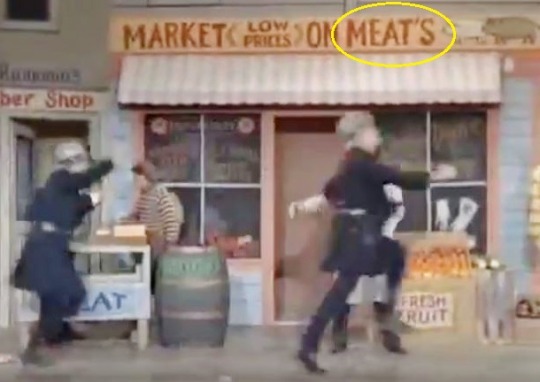
“Lucy Meets Mickey Rooney” (1966)
The backdrop for the Charlie Chaplin sketch features a sign for a market that has “Low Prices on Meat’s”. The grammatically incorrect possessive apostrophe is particularly odd. By that logic, the episode should be titled “Lucy Meet’s Mickey Rooney”!
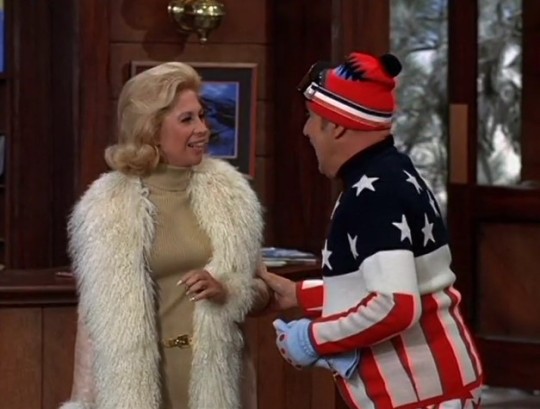
“Someone’s on the Ski Lift with Dinah” (1971)
Harry feels entitled to approach Dinah Shore because his butcher’s cousin’s son’s best friend is engaged to her manicurist.

“Mary Jane’s Boyfriend” (1974)
Mary Jane’s boyfriend of the title owns a meat market. His name is Walter Butley (Cliff Norton). Harry calls Walter “meathead” because when he walked in the door, Lucy had just plopped a package of ground round on his head.

Possibly the most famous butcher on television was Sam Franklin, played by Allan Melvin on “The Brady Bunch.” Desi Arnaz Jr. appeared on the show in 1970, although Melvin did not appear on that episode. Also, Eve Plumb (Jan Brady) played Lucy Carter’s niece on a 1972 episode of “Here’s Lucy.”
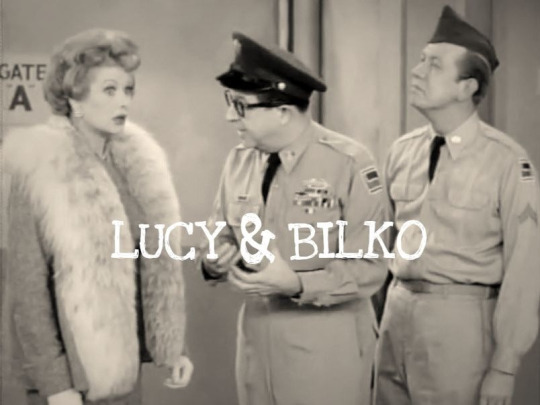
Melvin appeared with Lucille Ball in a 1959 episode of “Sergeant Bilko” (aka “The Phil Silvers Show”) titled “Bilko and the Ape Man.” Melvin also appeared in several Desilu series: “Vacation Playhouse”, “The Danny Thomas Show,” “The Joey Bishop Show,” “The Dick Van Dyke Show,” “The Andy Griffith Show,” “Gomer Pyle U.S.M.C.,” “Mayberry R.F.D.”

#Lucille Ball#I love lucy#the lucy show#Here's Lucy#The Brady Bunch#My Favorite Husband#Alan Melville#Joe Mell#Cliff Norton#Sergeant Bilko#Phil Silvers#Vivian Vance#Ann B. Davis#Dinah Shore#Gale Gordon#Mickey Rooney#Ann Sothern#Tom Linder#Fred Aldrich#Hans Conried#Edward Everett Horton#Richard Denning#TV
5 notes
·
View notes
Text
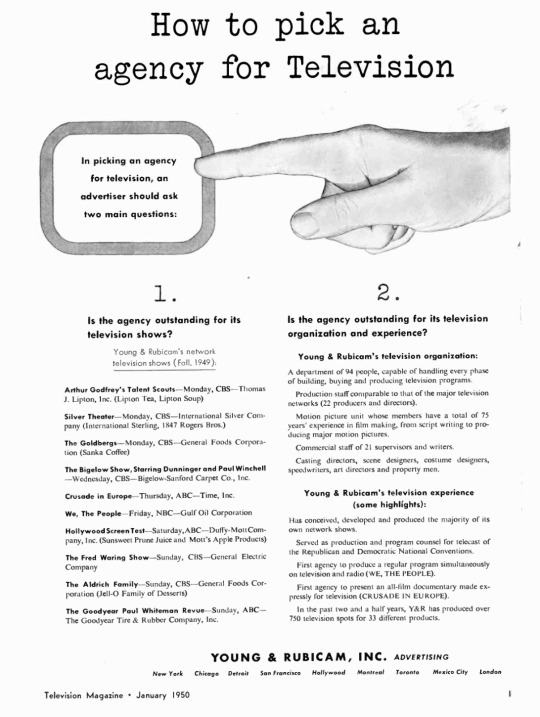
"How to pick an agency for television" (1950)
#vintage#retro#advertising#vintage ad#old ad#1950s#television#ad agency#advertising agency#Young & Rubicam#house ad#early TV#1950s television#Arthur Godfrey#Fred Waring#Aldrich family
32 notes
·
View notes
Text
"How much safer has construction really gotten? Let’s take a look.
Construction used to be incredibly dangerous
By the end of the 19th century, what’s sometimes called the second industrial revolution had made US industry incredibly productive. But it had also made working conditions more dangerous...
One source estimates 25,000 total US workplace fatalities in 1908 (Aldrich 1997). Another 1913 estimate gave 23,000 deaths against 38 million workers. Per capita, this is about 61 deaths per 100,000 workers, roughly 17 times the rate of workplace fatalities we have today...
In a world of dangerous work, construction was one of the most dangerous industries of all. By the 1930s and early 1940s the occupational death rate for all US workers had fallen to around 36-37 per 100,000 workers. At the same time [in the 1930s and early 1940s], the death rate in construction was around 150-200 deaths per 100,000 workers, roughly five times as high... By comparison, the death rate of US troops in Afghanistan in 2010 was about 500 per 100,000 troops. By the mid-20th century, the only industry sector more dangerous than construction was mining, which had a death rate roughly 50% higher than construction.
We see something similar if we look at injuries. In 1958 the rate of disabling injuries in construction was 3 times as high as the manufacturing rate, and almost 5 times as high as the overall worker rate.
Increasing safety
Over the course of the 20th century, construction steadily got safer.

Between 1940 and 2023, the occupational death rate in construction declined from 150-200 per 100,000 workers to 13-15 per 100,000 workers, or more than 90%. Source: US Statistical Abstract, FRED
For ironworkers, the death rate went from around 250-300 per 100,000 workers in the late 1940s to 27 per 100,000 today.
Tracking trends in construction injuries is harder, due to data consistency issues. A death is a death, but what sort of injury counts as “severe,” or “disabling,” or is even worth reporting is likely to change over time. [3] But we seem to see a similar trend there. Looking at BLS Occupational Injuries and Illnesses data, between the 1970s and 2020s the injury rate per 100 workers declined from 15 to 2.5.
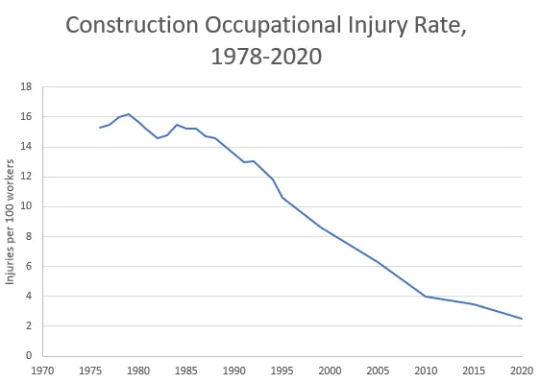
Source of safety improvements
Improvements in US construction safety were due to a multitude of factors, and part of a much broader trend of improving workplace safety that took place over the 20th century.
The most significant early step was the passage of workers compensation laws, which compensated workers in the event of an injury, increasing the costs to employers if workers were injured (Aldrich 1997). Prior to workers comp laws, a worker or his family would have to sue his employer for damages and prove negligence in the event of an injury or death. Wisconsin passed the first state workers comp law in 1911, and by 1921 most states had workers compensation programs.
The subsequent rising costs of worker injuries and deaths caused employers to focus more on workplace safety. According to Mark Aldrich, historian and former OSHA economist, “Companies began to guard machines and power sources while machinery makers developed safer designs. Managers began to look for hidden dangers at work, and to require that workers wear hard hats and safety glasses.” Associations and trade journals for safety engineering, such as the American Society of Safety Professionals, began to appear...
In 1934, the Department of Labor established a Division of Labor Standards, which would later become the Occupational Safety and Health Administration (OSHA), to “promote worker safety and health.” The 1935 National Labor Relations Act (NLRA), which legalized collective bargaining, allowed trade unions to advocate for worker safety.
Following WWII, the scale of government intervention in addressing social problems, including worker safety, dramatically increased.
In addition to OSHA and environmental protection laws, this era also saw the creation of the Consumer Product Safety Commission (CPSC), the National Highway Traffic Safety Administration (NHTSA), and the National Institute for Occupational Safety and Health (NIOSH).
OSHA in particular dramatically changed the landscape of workplace safety, and is sometimes viewed as “the culmination of 60 or more years of effort towards a safe and hazard-free workplace.”"
-via Construction Physics (Substack newsletter by Brian Potter), 3/9/23
#construction#osha#workplace#workplace safety#workers rights#labor rights#occupational health#nlra#collective bargaining#united states#us history#labor unions#industrial revolution#this is why unions and regulations are so fucking important by the way#if you have not studied late 1800s and early 1900s labor history in the US#you really can't grasp how incredibly dangerous things used to be#and how much proof we have that corporations suck#government regulations
90 notes
·
View notes
Photo

Lorne Greene and Joan Crawford in Autumn Leaves (Robert Aldrich, 1956) Cast: Joan Crawford, Cliff Robertson, Vera Miles, Lorne Greene, Ruth Donnelly, Shepperd Strudwick. Screenplay: Jean Rouverol*, Hugo Butler*, Lewis Meltzer, Robert Blees. Cinematography: Charles Lang. Music: Hans J. Salter. Costume design: Jean Louis. Six years before What Ever Happened to Baby Jane? Robert Aldrich directed Joan Crawford in Autumn Leaves. I mention this because the image many people now have of Aldrich comes from Alfred Molina's portrayal of him in the TV series Feud that concentrated on the shenanigans of Crawford and Bette Davis on the set of Baby Jane. Molina's Aldrich is a punching bag for Jessica Lange's Crawford and Susan Sarandon's Davis, and a studio hack under the thumb of Stanley Tucci's snaky Jack Warner. In fact, Aldrich was a gifted director with some strong credits, including the noir version of Mickey Spillane's Kiss Me Deadly (1955) and the action epic The Dirty Dozen (1967). Autumn Leaves shows off his strengths, especially in keeping a florid melodrama about Hollywood's idea of mental illness just this side of plausibility. He makes the most of the film's major set, Millicent Wetherby's (Crawford) bungalow, collaborating with cinematographer Charles Lang to keep an ordinary dwelling shadowy, confining, and off-kilter. Aldrich is particularly good at working with significant objects, and not only the typewriter that Burt Hanson (Cliff Robertson) so memorably hurls at Millicent. After a tense confrontation between Millicent and the increasingly unstable Burt, she goes from one room to another and there, front and center, Aldrich has placed precisely what we want to see: the telephone she should use to call for help. You sometimes sense that Aldrich is having a little fun with the film, too: He stages a beach makeout scene with Millicent and Burt kissing in the incoming tide that's an allusion to the celebrated scene with Deborah Kerr and Burt Lancaster in From Here to Eternity (Fred Zinnemann, 1953). Aldrich is surely aware that Crawford was offered Kerr's role but turned it down. Crawford had just turned 50 and her face was beginning to harden into the familiar mask of her later years, but she's still plausibly a good five to 10 years younger as the tense, wary, but near-fatally susceptible Millicent. Robertson, especially in his early scenes, keeps us wondering whether Burt is more than just a creep who likes to hit on older women. Unfortunately, the portrayal of mental illness is the usual Hollywood hackwork: Millicent is in denial about Burt's psychosis because she is starved for love, having sacrificed herself in her youth so she could tend to her father, an invalid. Burt's compulsive lying is the result of a trauma suffered when he discovered that his wife was having an affair with his father. And of course, a montage of medication and shock therapy is all that's needed to persuade us that Burt has been rehabbed and is ready to resume something like a normal relationship with a wife old enough to be his mother. If I were Millicent, I'd keep the typewriter locked up when not in use. *Jean Rouverol and Hugo Butler were blacklisted. The screen credit went to their "front," Jack Jevne.
5 notes
·
View notes
Text
30 anni senza Burt Lancaster, il trapezista che divenne Gattopardo Trent’anni fa moriva il grande attore a... #burtlancaster https://agrpress.it/30-anni-senza-burt-lancaster-il-trapezista-che-divenne-gattopardo/?feed_id=7580&_unique_id=6717f046b5d09
0 notes
Text





F/O LIST .ᐟ
❝ your freckles lead the way / i trace your constellations. ❞
𓇼 — a proper f/o list, finally. i've been wanting to make one, but have barely had the time, and motivation. this academic year is slaughtering me, but here we are! this will also include the characters from my oc x canon ships. thank you for taking the time to read through this :) i have a little code too <3 fyi, this is subjected to change!
⊹₊ ⋆ codes ;
♡ ⇢ no sharing ! ⚝ ⇢ selective sharing ! 𖦹 ⇢ okay with sharing ! ╰┈➤ 🥀⇢ romantic | 🍄⇢ platonic / familial

── .✦ MAIN(S)
🥀KENJI SATO ♡ [ultraman: rising]
🥀MIKEY ♡ [tokyo revengers]
🥀SAL FISHER ♡ [sally face]
🥀SHAKES ♡ [supa strikas]
🥀RIANO ♡ [supa strikas]
🥀LUCIFER ♡ [obey me]

── .✦ OTHER(S)
🥀DIAVOLO ⚝ [obey me]
🥀ZHONGLI ⚝ [genshin impact]
🥀KAMISATO AYATO ⚝ [genshin impact]
🥀ALHAITHAM ⚝ [genshin impact]
🥀DILUC ⚝ [genshin impact]
🥀NEUVILLETTE ⚝ [genshin impact]
🥀PRINCE KAITO ♡ [the lunar chronicles]
🥀BRIAN THOMAS ♡ [marble hornets]
🥀TIM WRIGHT ♡ [marble hornets]
🥀AARON WARNER ⚝ [shatter me]
🥀KENJI KISHIMOTO ⚝ [shatter me]
🥀IVAN ♡ [alien stage]
🥀BLADE ⚝ [honkai star rail]
🥀JING YUAN ⚝ [honkai star rail]
🥀BOOTHILL ⚝ [honkai star rail]
🥀SUNDAY ⚝ [honkai star rail]
🥀DAN HENG/FENG ⚝ [honkai star rail]
🥀SIMON RILEY ♡ [call of duty]
🥀JOHN MACTAVISH ⚝ [call of duty]
🥀KEEGAN RUSS ⚝ [call of duty]
🥀VESSEL ♡ [sleep token]
🥀TAKASHI SHIROGANE ♡ [voltron: legendary defender]
🥀KEITH KOGANE ⚝ [voltron: legendary defender]
🥀VYN RICTHER ♡ [tears of themis]
🥀EVAN HANSEN ♡ [dear evan hansen]
🥀CONNOR MURPHY ♡ [dear evan hansen]
🥀ART DONALDSON ♡ [challengers]
🥀RUNAAN ♡ [the dragon prince]
🥀ETHARI ♡ [the dragon prince]
🥀AMBROSIUS ♡ [nimona]
🥀BALLISTER ♡ [nimona]
🥀CEDRIC DIGGORY ♡ [harry potter]
🥀HARRY POTTER ♡ [harry potter]
🥀BLAISE ZABINI ⚝ [harry potter]
🥀KILLIAN ♡ [where's tess]
🥀DYLAN ALDRICH MONTGOMERY ♡ [where's tess]
🥀ALEX SMITH ♡ [where's tess]
🥀TELEMACHUS ♡ [epic: the musical]

── .✦ CRUSH(ES)
🥀FRED WEASLEY ⚝ [harry potter]
🥀GEORGE WEASLEY ⚝ [harry potter]
🥀DRACO MALFOY ⚝ [harry potter]
🥀SIMEON ⚝ [obey me]
🥀HOLLY ⚝ [where's tess]

── .✦ FAMILIAL / PLATONIC(S)
🍄MIZI 𖦹 [alien stage]
🍄HYUNA 𖦹 [alien stage]
🍄NAZEERA IBRAHIM 𖦹 [shatter me]
🍄JULIETTE FERRARS 𖦹 [shatter me]
🍄REMUS LUPIN ⚝ [harry potter]
🍄MINERVA MCGONAGALL 𖦹 [harry potter]
🍄HERMIONE GRANGER 𖦹 [harry potter]
🍄GINNY WEASLEY 𖦹 [harry potter]
🍄LUNA LOVEGOOD 𖦹 [harry potter]
🍄FLEUR DELACOUR 𖦹 [harry potter]
🍄NIMONA 𖦹 [nimona]
🍄ODYSSEUS ⚝ [epic: the musical]
ch4rryc0smos © 2024

#f/o list#fictional other#fictional others#self ship#selfshipper#self shipping community#navigation#selfship blog#selfship community#fictional other list#selfshipping
3 notes
·
View notes
Text
An itinerant farmer and his young son help a heart-of-gold saloon singer search for her estranged husband. Credits: TheMovieDb. Film Cast: Matt Calder: Robert Mitchum Kay Weston: Marilyn Monroe Harry Weston: Rory Calhoun Mark Calder: Tommy Rettig Dave Colby: Murvyn Vye Sam Benson: Douglas Spencer Minister at Tent City (uncredited): Arthur Shields Young Punk (uncredited): Larry Chance Prospector (uncredited): Chuck Hicks Dance Hall Girl (uncredited): Ann McCrea Bartender (uncredited): Ralph Sanford Prospector (uncredited): Fred Aldrich Surrey Driver (uncredited): Claire Andre Young Punk (uncredited): Hal Baylor Ben (uncredited): Don Beddoe Prospector (uncredited): Phil Bloom Council City Barfly (uncredited): Buck Bucko Prospector (uncredited): Roy Bucko Leering Man (uncredited): John Cliff Barber (uncredited): Edmund Cobb Prospector (uncredited): Cecil Combs Man in Saloon (uncredited): John Doucette Prospector (uncredited): Tex Driscoll Dance Hall Girl (uncredited): Geneva Gray Wagon Driver (uncredited): Al Haskell Gambler (uncredited): Ed Hinton Prospector (uncredited): George Huggins Prospector (uncredited): Michael Jeffers Prospector (uncredited): Dick Johnstone Prospector (uncredited): Mitchell Kowall Prospector (uncredited): Richard LaMarr Young Punk (uncredited): Anthony Lawrence Saloon Dancer (uncredited): Jarma Lewis Prospector (uncredited): Jack Low Council City Townsman (uncredited): Hank Mann Card Table Dealer (uncredited): Jack Mather Young Man (uncredited): Harry Monty Dancer (uncredited): Fay Morley Prospector (uncredited): Charles Morton Prospector (uncredited): Paul Newlan Blonde Dancer (uncredited): Barbara Nichols Prospector (uncredited): Anton Northpole Council City Barfly (uncredited): George Patay Prospector (uncredited): Jack Perrin Prospector (uncredited): Charles Perry Prospector (uncredited): Ford Raymond Prospector (uncredited): John Rice Prospector (uncredited): Robert Robinson Prospector (uncredited): John Roy Prospector (uncredited): Danny Sands Settler (uncredited): Lucile Sewall Pianist (uncredited): Harry Seymour Council City Barfly (uncredited): Cap Somers Council City Barfly (uncredited): George Sowards Prospector (uncredited): Charles Sullivan Prospector (uncredited): Jack Tornek Young Punk (uncredited): John Veitch Prospector (uncredited): Fred Walton Council City Barfly (uncredited): Bob Whitney Prospector (uncredited): Harry Wilson Trader (uncredited): Will Wright …: Joe Phillips Film Crew: Original Music Composer: Cyril J. Mockridge Editor: Louis R. Loeffler Producer: Stanley Rubin Art Direction: Addison Hehr Screenplay: Frank Fenton Director: Otto Preminger Sound: Roger Heman Sr. Sound: Bernard Freericks Assistant Director: Paul Helmick Costume Design: Travilla Director of Photography: Joseph LaShelle Story: Louis Lantz Songs: Lionel Newman Art Direction: Lyle R. Wheeler Set Decoration: Walter M. Scott Set Decoration: Chester L. Bayhi Special Effects: Ray Kellogg Orchestrator: Edward B. Powell Choreographer: Jack Cole Makeup Artist: Ben Nye Stunts: Bob Herron Stunts: Bob Hoy Stunts: Harry Froboess Stunts: Bob Morgan Stunts: Helen Thurston Stunts: Harry Monty Stunt Coordinator: Fred Zendar Stunts: Tim Wallace Music: Leigh Harline Makeup Artist: Allan Snyder Second Assistant Director: Donald C. Klune Stunts: Dan Heather First Assistant Editor: Orven Schanzer Songs: Ken Darby Movie Reviews: John Chard: What are you chasing Calder? After a stint in jail, Matt Calder is reunited with his son Mark and sets both of them up at a riverside lodge. One day he helps aid a couple who are struggling with their raft down the river. It turns out to be a dubious gambler named Harry Weston and his saloon singer girlfriend, Kay, whom both Matt and Mark have already been acquainted with. Turns out that Harry is in a rush to register his mining claim that he has just won, and sensing his journey will be considerably quicker and safer on horseback, steals, after a fight, Matt’s rifle and horse. Agreeing to let Kay stay behind with the Calder’s, Weston sets off. Once roused and ready to tr...
#19th century#farm#gambling#gold rush#Lover#puma#rapids#River#saloon#singer#small town#Top Rated Movies
0 notes
Text
Janvier MMXXIV
Films
Bridget Jones Baby (Bridget Jones's Baby) (2016) de Sharon Maguire avec Renée Zellweger, Patrick Dempsey, Shirley Henderson, Gemma Jones et Jim Broadbent
Arnaque à Hollywood (The Comeback Trail) (2020) de George Gallo avec Robert De Niro, Tommy Lee Jones, Morgan Freeman, Zach Braff, Eddie Griffin, Emile Hirsch et Kate Katzman
Copie conforme (1947) de Jean Dréville avec Louis Jouvet, Suzy Delair, Annette Poivre, Madeleine Suffel, Jane Marken, Danièle Franconville, Jean-Jacques Delbo et Léo Lapara
L'Inconnu du Nord-Express (Strangers on a Train) (1951) d'Alfred Hitchcock avec Farley Granger, Ruth Roman, Robert Walker, Leo G. Carroll, Patricia Hitchcock, Marion Lorne, Jonathan Hale et Laura Elliott
Une affaire d'honneur (2023) de et avec Vincent Perez et aussi Roschdy Zem, Doria Tillier, Damien Bonnard, Guillaume Gallienne, Nicolas Gaspar, Pepe Lorente
Hôtel fantôme (Das letzte Problem) (2019) de et avec Karl Markovics et aussi Stefan Pohl, Maria Fliri, Julia Koch, Max Moor, Sunnyi Melles Laura Bilgeri
Aviator (The Aviator) (2004) de Martin Scorsese avec Leonardo DiCaprio, Cate Blanchett, Kate Beckinsale, Adam Scott, Kelli Garner, Alec Baldwin, Ian Holm, Jude Law et Danny Huston
Palais royal ! (2005) de et avec Valérie Lemerciere et aussi Lambert Wilson, Catherine Deneuve, Michel Aumont, Mathilde Seigner, Denis Podalydès, Michel Vuillermoz, Gisèle Casadesus, Gilbert Melki, Maurane
Du plomb pour l'inspecteur (Pushover) (1954) de Richard Quine avec Fred MacMurray, Philip Carey, Kim Novak, Dorothy Malonne, E.G. Marshall, Allen Nourse, James Anderson et Joe Bailey
Les Douze Salopards (The Dirty Dozen) (1967) de Robert Aldrich avec Lee Marvin, Ernest Borgnine, Charles Bronson, Jim Brown, John Cassavetes, Richard Jaeckel, George Kennedy, Trini Lopez et Telly Savalas
Le silence des ânes (Das Schweigen der Esel) (2022) de et avec Karl Markovics et aussi Julia Koch, Caroline Frank, Gerhard Liebmann, Valentin Sottopietra, Klaus Windisch, Tobias Fend, Julian Sark, Stefan Pohl
Elmer Gantry le charlatan (Elmer Gantry) (1960) de Richard Brooks avec Burt Lancaster, Jean Simmons, Arthur Kennedy, Dean Jagger, Shirley Jones, Patti Page et Edward Andrews
Tendre Poulet (1978) de Philippe de Broca avec Annie Girardot, Philippe Noiret, Catherine Alric, Hubert Deschamps, Paulette Dubost, Roger Dumas, Raymond Gérôme, Guy Marchand, Simone Renant et Georges Wilson
Judy (2019) de Rupert Goold avec Renée Zellweger, Darci Shaw, Rufus Sewell, Michael Gambon, Finn Wittrock, Richard Cordery, Jessie Buckley et Bella Ramsey
Cinquième Colonne (Saboteur) (1942) d'Alfred Hitchcock avec Robert Cummings, Priscilla Lane, Otto Kruger, Alan Baxter, Clem Bevans, Norman Lloyd, Alma Kruger et Vaughan Glaser
Robin des Bois, prince des voleurs (Robin Hood: Prince of Thieves) (1991) de Kevin Reynolds avec Kevin Costner, Morgan Freeman, Christian Slater, Alan Rickman, Mary Elizabeth Mastrantonio, Nick Brimble et Michael McShane
La Fine Fleur (2020) de Pierre Pinaud avec Catherine Frot, Melan Omerta, Fatsah Bouyahmed, Olivia Côte, Marie Petiot, Vincent Dedienne et Serpentine Teyssier
Maigret et l'Affaire Saint-Fiacre (1959) de Jean Delannoy avec Jean Gabin, Michel Auclair, Valentine Tessier, Robert Hirsch, Paul Frankeur, Michel Vitold, Camille Guérini, Serge Rousseau et Micheline Luccioni
On a volé la cuisse de Jupiter (1980) de Philippe de Broca avec Annie Girardot, Philippe Noiret, Francis Perrin, Catherine Alric, Marc Dudicourt, Paulette Dubost et Roger Carel
Gosford Park (2001) de Robert Altman avec Maggie Smith, Michael Gambon, Kristin Scott Thomas, Camilla Rutherford, Charles Dance, Geraldine Somerville, Tom Hollander, Stephen Fry, Helen Mirren et Emily Watson
Meurtre à Hollywood (Sunset) (1988) de Blake Edwards avec Bruce Willis, James Garner, Malcolm McDowell, Mariel Hemingway, Kathleen Quinlan, Jennifer Edwards, Victoria Alperin et Patricia Hodge
Iron Claw (The Iron Claw) (2023) de Sean Durkin avec Zac Efron, Jeremy Allen White, Harris Dickinson, Holt McCallany, Lily James, Maura Tierney et Stanley Simons
Séries
La croisière s'amuse Saison 1
Une traversée de chien - L'Amour fou - Ami ou Ennemi - Farces et Attrapes - Une célébrité encombrante - Le Grand Air - Le docteur voit double - Le Grand Amour - Le Père du commandant - Monnaie de singe - La vie est belle au large - Tel est pris qui croyait prendre - Jeux de mains - Les Grandes Retrouvailles : première partie - Les Grandes Retrouvailles : deuxième partie - La Victoire en dansant - Le Gros Lot - Coupable, mais de quoi ? - Souvenirs Souvenirs - Il y a des jours comme ça - Qui comprend quelque chose à l'amour ? - Le commandant connaît la musique - Coup de folie - Ne comptez pas sur moi pour tomber amoureuse
Coffre à Catch
#148 : Bonne année 2024 à tout l'univers d'Agius ! - #149 : Zack Ryder : Woo Woo Woo, tu le sais ! - #150 : L'exceptionnel retour de Colby ! - #151 : Les adieux au catch de Tommy Dreamer ? - #152 : Tommy Dreamer enfin champion de la ECW !
Les Simpson Saison 1
Noël mortel - Bart le génie - L'Odyssée d'Homer - Simpsonothérapie - Terreur à la récré - Ste Lisa Blues - L'Abominable Homme des bois - Bart a perdu la tête - Marge perd la boule - L'Odyssée d'Homer - L'Espion qui venait de chez moi - Un clown à l'ombre - Une soirée d'enfer
Downton Abbey Saison 5
Tradition et Rébellion - Un vent de liberté - Le Bonheur d'être aimé - Révolution à Downton - Tout ce qui compte… - Étape par étape - Désillusions - Menaces et Préjugés - La Réconciliation
Castle Saison 4
Renaissance - Lame solitaire - Casse-tête - L'Empreinte d'une arme - L'Art de voler - Démons - Otages - Dans l'antre du jeu - Course contre la mort - Détache-moi
Kaamelott Livre IV
Tous les matins du monde première partie - Tous les matins du monde deuxième partie - Raison et Sentiments - Les Tartes aux fraises - Le Dédale - Les Pisteurs - Le Traître - La Faute première partie - La Faute deuxième partie - L’Ascension du Lion - Une vie simple - Le Privilégié - Le Bouleversé - Les Liaisons dangereuses - Les Exploités II - Dagonet et le Cadastre - Duel première partie - Duel deuxième partie - La Foi bretonne - Au service secret de Sa Majesté - La Parade - Seigneur Caius - L’Échange première partie - L’Échange deuxième partie - L’Échelle de Perceval - La Chambre de la reine - Les Émancipés - La Révoquée - La Baliste II - Les Bonnes - La Révolte III - Le Rapport - L’Art de la table - Les Novices - Les Refoulés - Les Tuteurs II - Le Tourment IV - Le Rassemblement du corbeau II - Le Grand Départ - L’Auberge rouge - Les Curieux : première partie - Les Curieux : deuxième partie - La Clandestine - Les Envahisseurs - La vie est belle - La Relève - Les Tacticiens : première partie - Les Tacticiens : deuxième partie - Drakkars ! - La Réponse - Unagi IV - La Permission - Anges et Démons - La Rémanence - Le Refuge - Le Dragon gris - La Potion de vivacité II - Vox populi III - La Sonde - La Réaffectation - La Poétique II : première partie - La Poétique II : deuxième partie
Affaires sensibles
Henri Martin, debout contre la guerre d’Indochine - 1923 : Germaine Berton : l’anarchiste qui tua pour venger Jaurès - Prince de Conty : où sont passés les lingots de l'épave? - De Paris à Dakar, le rallye du désert - Cannes 1987, Pialat et sa palme - Affaire Mis et Thiennot, la fin de l'énigme judiciaire ? - Agnès Le Roux, la disparition d’une héritière - Les mystères de Chevaline
The Crown Saison 6
Un engouement fanatique - Hors du temps
Le Voyageur Saison 2
La Forêt perchée - La tentation du mal
Alfred Hitchcock présente Saison 5, 6, 3, 7
Arthur - La Vengeance - Chantage - Pan! vous êtes mort
Spectacles
Concert du Nouvel An en direct du Musikverein, à Vienne (2024)
Adele Live At The Royal Albert Hall (2011)
Sexe et jalousie (1993) de Marc Camoletti et Georges Folgoas avec Jean-Luc Moreau, Marie-Pierre Casey, Patrick Guillemin, Marie Lenoir et Bunny Godillot
Billy Cobham's Glass Menagerie (1981) live at Riazzino, Switzerland
Agents Are Forever : Danish National Symphony Orchestra (2020) avec Caroline Henderson
Bonté divine (2010) de Frédéric Lenoir et Louis-Michel Colla avec Jean-Loup Horwitz, Benoit Nguyen-Tat, Saïd Amadis et Roland Giraud
Livres
Kid Paddle, Tome 1 : Jeux de vilains de Midam
Détective Conan, Tome 20 de Gôshô Aoyama
Castle, Tome 1 : La dernière aube de Brian Michael Bendis, Kelly Sue DeConnick et Tom Raney
James Bond : Le guide officiel de 007 de Lee Pfeiffer et Dave Worrall
0 notes
Text


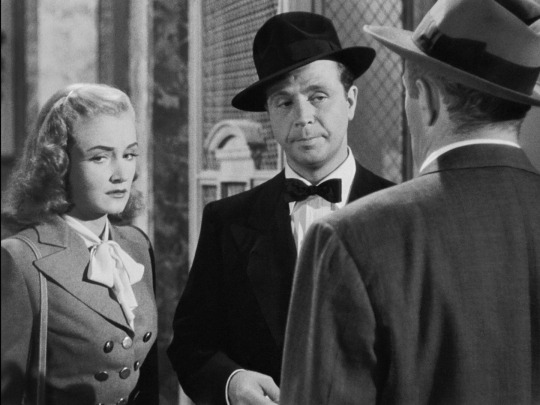





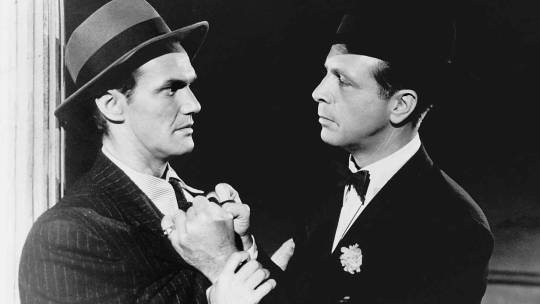
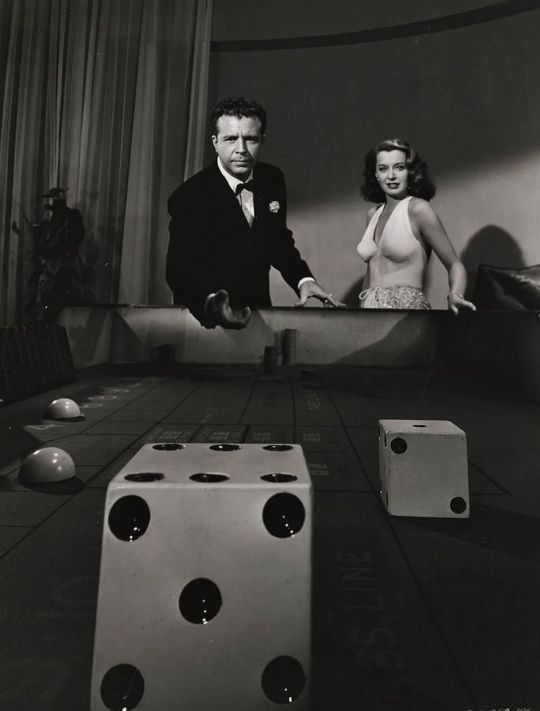
Johnny O'Clock (1947)
"You heard him tell about how many years we've been together, what we've been through."
"Ah, Johnny, baby, he'd be the first one to stick a knife in your back."
"It's there already. I can feel the blood sticking to my shirt."
#johnny o'clock#film noir#1947#american cinema#robert rossen#milton holmes#dick powell#evelyn keyes#lee j. cobb#ellen drew#nina foch#thomas gomez#john kellogg#jim bannon#mabel paige#phil brown#fred aldrich#jeff chandler#matty fain#george duning#disappointing that nobody asks what time it is in this film‚ only for the title character to yell IT'S JOHNNY O'CLOCK and start blasting#otherwise this is a very solid noir‚ propped up by having one of the most interesting protagonists you could find in this kind of film#Johnny is fascinating because he's neither hero nor villain; he's the epitome of shades of grey‚ his whole existence a tightrope walk#between good and bad‚ legal and illegal‚ right and wrong. it's an increasingly desperate position‚ as he desperately tries to keep#himself on the fence he's constructed and not get drawn into the machinations of the gangsters he's aligned with or the cop that's out#to break them (Cobb in a typically assured performance). he's like a crook's Hamlet‚ inextricably pulled into a conflict he isn't certain#he wants to be in. also of note is some very interesting (and surprisingly direct) queer coding between Johnny and his 'man' Charlie#a hoodlum who Johnny looked after and now lives with him as a kind of valet and chef‚ but whose responses to the events of the film are#closer to those of a jealous lover. at one point Keyes asks Johnny who he's trying to convince as a womaniser‚ her or himself‚ and it feels#like a significant dig at the lifestyle Johnny's constructed for himself. and lovely Nina Foch turns up which is always a delight
24 notes
·
View notes
Text
Deep In The Heart Of Texas 1942

#deep in the heart of texas#johnny mack brown#tex ritter#fuzzy knight#jennifer holt#william farnum#harry woods#kenneth harlan#pat o'malley#roy brent#edmund cobb#jimmy wakely trio#fred aldrich#johnny bond#rudy bowman#roy bucko#budd buster#tex driscoll#hank worden#jimmy wakely#jack tornek#cap somers#tom smith#eddie polo#frank ellis#augie gomez#chick hannan#earle hodgins#scotty harrel#ray jones
20 notes
·
View notes
Text
TRAINSPOTTING!
Lucy and Railway Transportation
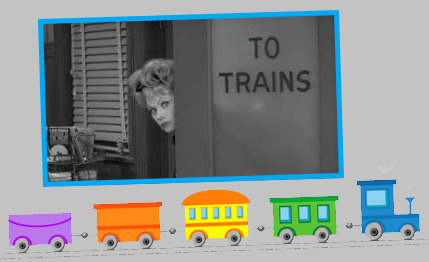
Before America was ruled by the automobile, train transportation was the way to go. Lucy makes tracks for the railroad in these unforgettable moments on the (laugh) tracks.

As a young girl, Lucy would take the train from Jamestown to New York City, hoping to fulfill her dreams of becoming a performer. The train station is now part of the National Comedy Museum.
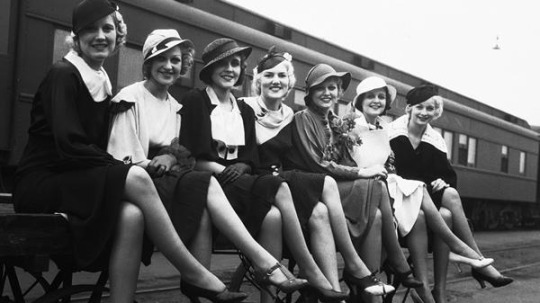
1933 ~ Lucille Ball joined the Goldwyn Girls on a train headed west to Tinseltown. Left to right are Katherine Mauk,Rosalie Fromson, Mary Lange, Vivian Keefer, Barbara Pepper, Theo Phane, and Lucille Ball.
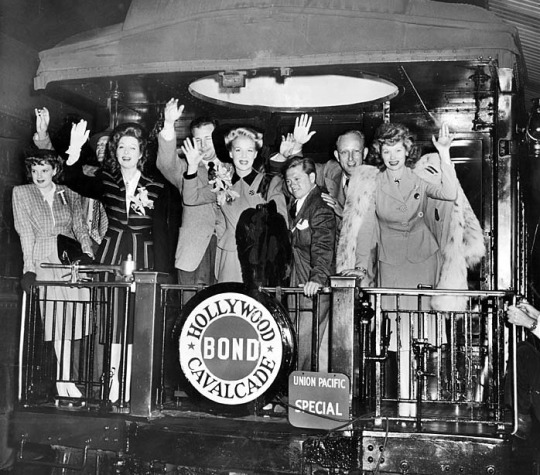
1943 ~ Lucille Ball and other well-known stars set out on a Union Pacific special train to cross America promoting the sale of War Bonds. It began in Washington DC and went through 16 American cities before ending in San Francisco 21 days later.
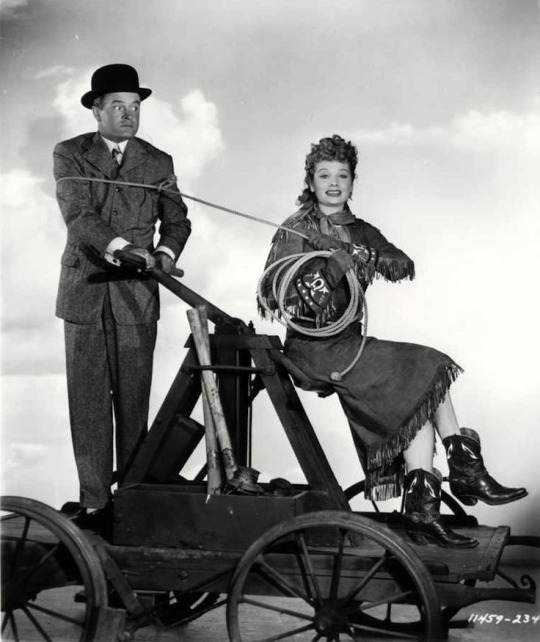
Fancy Pants (1950) ~ Lucille Ball and Bob Hope pose atop a railroad handcar.
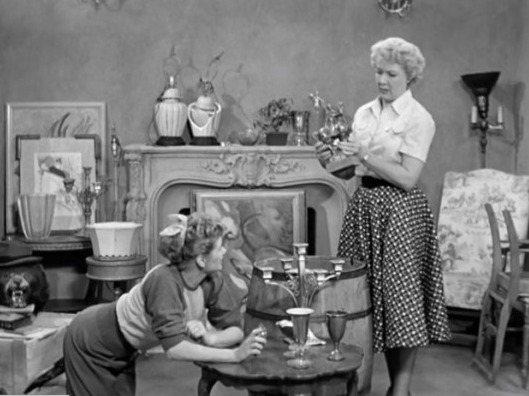
“New Neighbors” (1952) ~ When Ethel is looking through the O’Brien’s belongings, she holds up a bronze of a man on horseback. She deems it “early Pullman.” Pullman refers to railroad sleeping cars that were built and operated by the Pullman Company from 1867 to 1968. The cars were often decorated with inexpensive items that sometimes found their way into travelers’ suitcases!
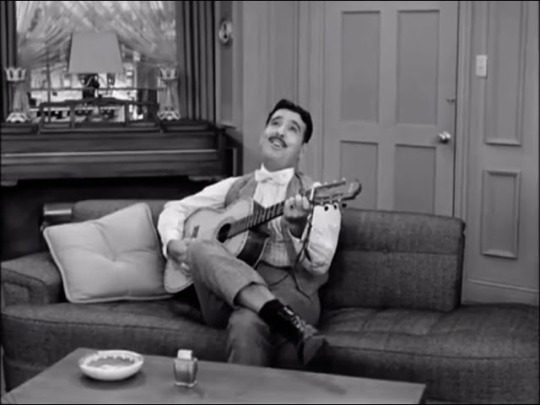
“Tennessee Ernie Visits” & “Tennessee Ernie Hangs On” (1954) ~ Ford sings the train-themed song "The Wabash Cannonball” waking Lucy and Ricky from a sound sleep, and then again just before Lucy enters as the 'wicked city woman.' The song’s first documented appearance was on sheet music published in 1882, titled “The Great Rock Island Route” and credited to J.A. Roff. A revised version was made famous by Roy Acuff in 1936.
Listen to the jingle, the rumble and the roar As she glides along the woodland o'er the hills and by the shore. Hear the mighty rush of the engine hear the lonesome hobo's call As you travel across the country on the Wabash Cannonball.

“Getting Ready” (1954) ~ Thinking about how to get to Hollywood, Lucy considers the train. The brochure Lucy reads has the Union Pacific Railroad’s logo redacted. In reality, the Union Pacific did not operate East of the Mississippi, betraying the show’s Southern California roots!
LUCY (to Ricky): You know, on the train, you can see the country you're passing through. This is little Ricky's first chance to go across the United States, so don't you think you ought to get a chance to really see it?
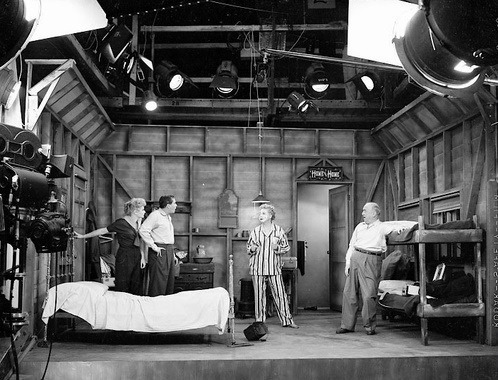
“First Stop” (1955) ~ On their cross-country road trip, the gang takes refuge at One Oak Cafe and Cabins. Their rundown cabin is near an unseen (but loudly heard) railroad - which causes the entire building to shake!

“Ricky Sells The Car” (1955) ~ In this episode we learn that the gang will return to NYC by train on the Union Pacific Railroad’s new Domeliner service on the City of Los Angeles train. A rift develops between the Ricardos and Mertzes when there aren’t enough tickets in the same class. Don Brodie plays the Union Pacific Railroad clerk.
Before he entered show business, William Frawley (Fred Mertz) worked as a stenographer for the Union Pacific Railroad.
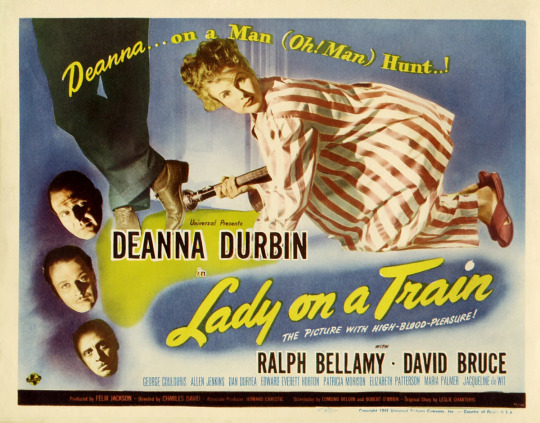
Frawley was featured in the 1945 Deanna Durbin film Lady on a Train. The Universal release also featured future “I Love Lucy” cast members Elizabeth Patterson (Mrs. Trumbull), Edward Everett Horton (Mr. Ritter), Allen Jenkins, Fred Aldrich, Joseph Crehan, Mike Lally, Sam Harris, and Sam McDaniel, who played a train porter, just as he would in...
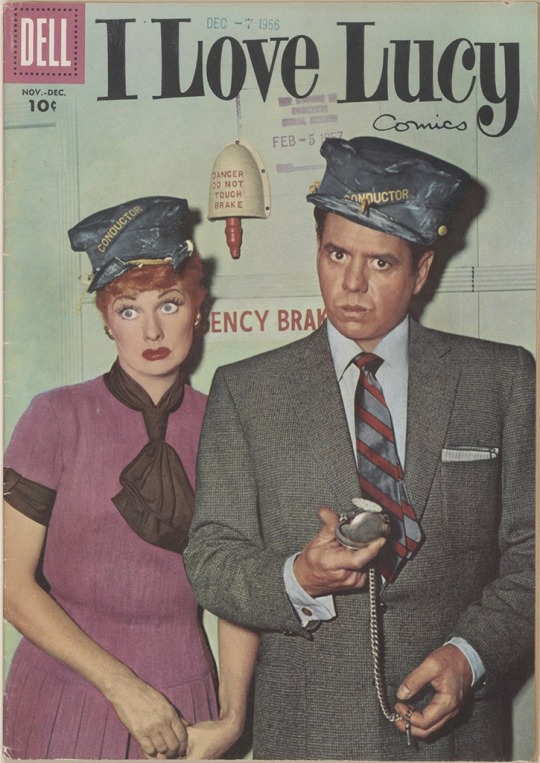
“The Great Train Robbery” (1955) ~ Returning from Hollywood to New York, Lucy wreaks havoc on the City of Los Angeles train.

As set up in the previous episode, Desilu had a partnership with Union Pacific Railroad. The line operated the City of Los Angeles train from 1936 to 1971, when Amtrak took over national train service in the USA. Although it is not mentioned, the train route terminated in Chicago, where, presumably, the foursome got a connecting train to New York City, perhaps the famed 20th Century Limited.
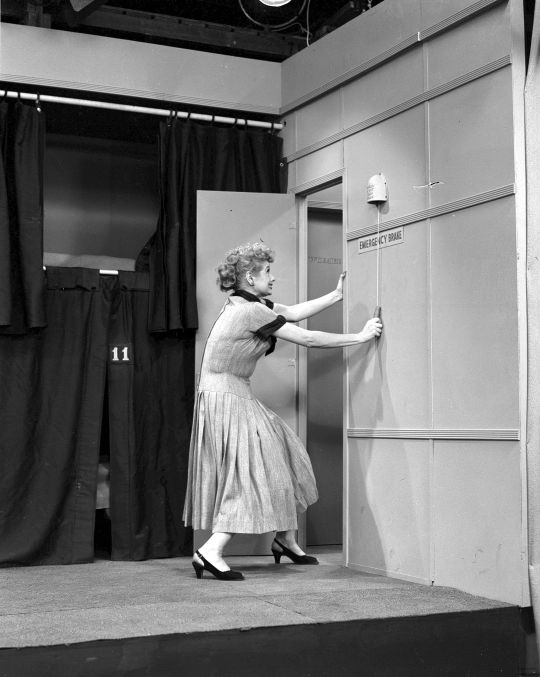
To simulate the emergency braking of a speeding train, Desi wanted more than just actors reacting to a jolting camera, so sets were built on a spring mechanism that was triggered by the emergency brake itself. When Lucy pulled the handle, it caused the entire set to lurch forward in a sudden movement. All this is demonstrated in the special features section of the DVD release.

As part of the partnership with UPR, Desilu was granted permission to film aboard the real Domeliner train. As there was a nearby train station, Vivian Vance, William Frawley, Kathryn Card, Frank Nelson (the conductor) and Sam McDaniel (the porter) were all featured in the location footage on the platform and doubles were not used. Lucille Ball and Desi Arnaz, however, do not appear in any of the second unit location footage. This is the only time principal cast members (instead of doubles) went on location during the half-hour series.
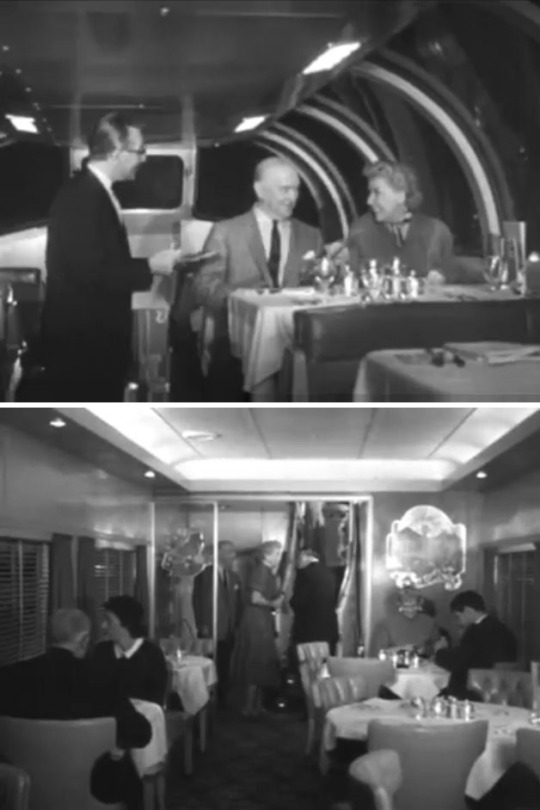
Footage of Fred and Ethel enjoying the Domeliner’s dining car and lounge were cut when it was realized that movement outside the window did not line up with the episode’s continuity. Rare 16mm film footage of the scenes was discovered and allowed the cut scenes to be added to the 2005 DVD release.

The lounge, however, was recreated on the soundstage. The short scene of the Mertzes boarding the train on the platform (complete with sound), assisted by the Porter and the Conductor, was still included in future syndicated broadcasts.

“Lucy’s Italian Movie” (1956) ~ Opens in a crowded train compartment headed to Rome. Here Lucy meets a film director and thinks this is her big break.

Band manager Fred failed to secure proper train acommodations for the overnight trip - forcing the gang into some unusual sleeping positions!
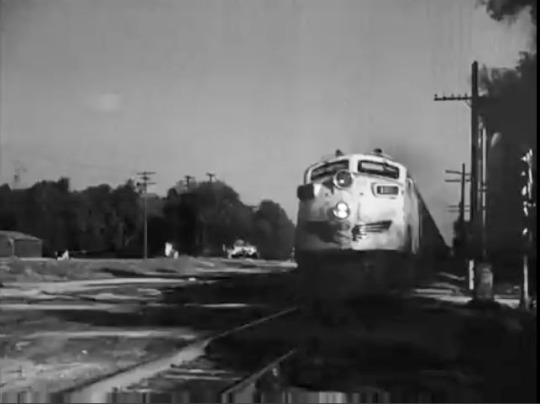
“Lucy Hunts Uranium” (1958) ~ The hour-long episode opens in a train car headed to Las Vegas, where Ricky's band is booked to perform at the Sands Hotel and Casino. Establishing footage indicates that they are traveling on the Union Pacific Railroad. In reality, getting to Las Vegas by train from Connecticut would have meant many transfers and route changes.

On the train they meet actor Fred MacMurray, who also gets uranium fever and races the Ricardos and Mertzes across the desert on a railroad handcar.

“Lucy Visits the White House” (1963) ~ Lucy and Viv accompany their scout troop to Washington DC on the train. The episode features establishing footage of an actual train and station.

The train makes stops in Greenview, Middlebrook, Flint Ridge, and Scottville. Like Danfield, all are fictional towns along a fictional railroad line.
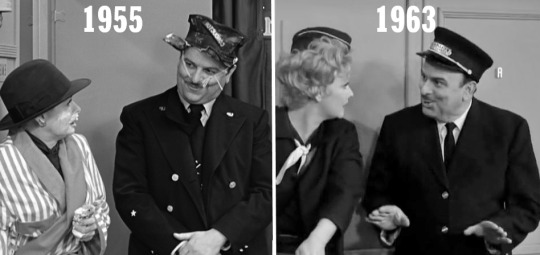
Frank Nelson reprises his role as the frazzled train conductor, first played in “The Great Train Robbery”.
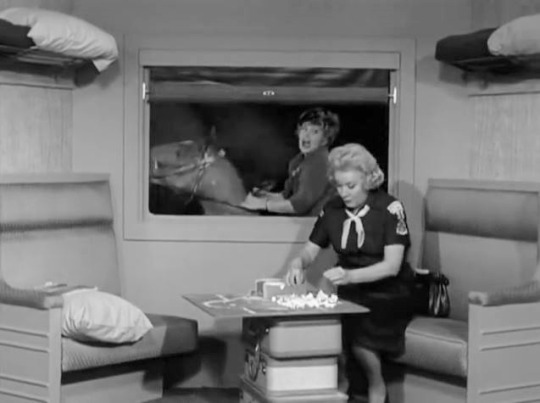
When Lucy misses the train, she tries to catch up on horseback. This sequence was shot on the soundstage using a mechanical horse. Coincidentally, an early literary name for a train was ‘iron horse’.
THE ‘FOREVER DARLING’ EXPRESS

Lucy and Desi board a special car provided by the Santa Fe Railroad to promote the film Forever Darling in early 1956.

The train was dubbed the “Forever Darling Special with stops in Chicago, Detroit, Dallas, Cleveland, Pittsburgh, Philadelphia, New York City, and Ball's hometown of Jamestown, New York.
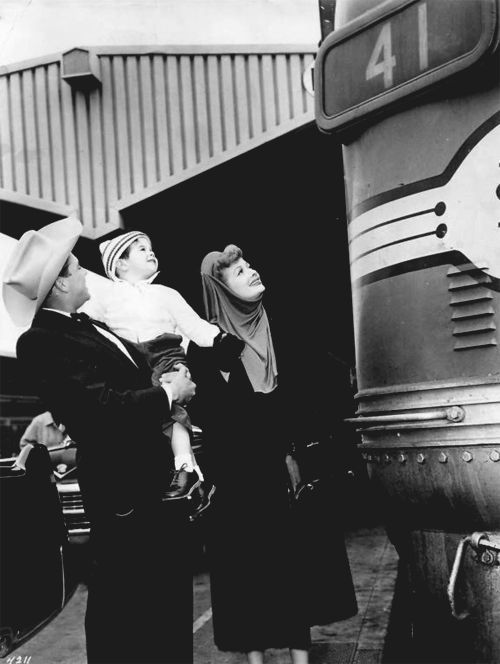
Back in Los Angeles, with Desi Jr., they admire the train that served them on their busy promotional tour. Desi is proudly wearing the cowboy hat he’d been given in Fort Worth.
TRAIN DEPOTS

“Off to Florida” (1956) ~ When Lucy misplaces their train tickets to Miami Beach, she and Ethel must share a car ride to Florida with Edna Grundy, a woman they suspect might be a hatchet murderess. At the end of the cross-fade between the second unit footage of the “North Miami” train station and the studio set of the same location, Lucy and Ethel’s doubles can be briefly glimpsed walking down the tracks on the left.

“Lucy and the Loving Cup” (1957) ~ Unable to tell where she is, Lucy gets off the subway train at the Flatbush Avenue station.
LUCY: Pardon me. Can you tell me where the stairs are? STRAP-HANGER: Well, you'd better get off the train first. LUCY: I am off. STRAP-HANGER: You're telling me.

“Lucy Misses the Mertzes” (1957) ~ The scene at the Westport Train Station is in the best tradition of farce, with both couples narrowly missing one another in the same space.
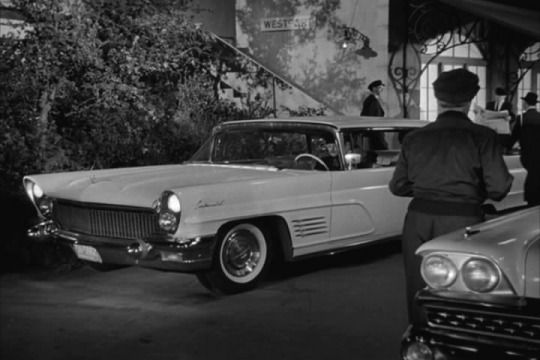
“Lucy and the Mustache” (1960) ~ Disguised as Ernie Kovacs’ chauffeur, Lucy parks outside the Westport train station.

“Lucy Wants a Career” (1959) ~ Lucy and Ricky only see each other at Grand Central Station, one of the most famous train stations ever built. There is establishing footage of Grand Central.
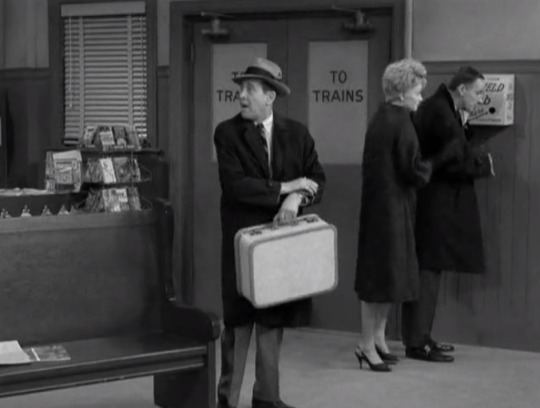
“No More Double Dates” (1962) ~ At the Danfield Train Station, Lucy and Harry narrowly miss Viv and Eddie when trying to have independent dates. When Lucy and Harry lie about missing their train, Eddie notes that the next one only makes one stop - in New Rochelle. The real-life New York town has already been mentioned several times in the series, establishing that Danfield (and nearby Ridgebury) are similar commuter suburbs of Manhattan.

“Lucy Visits the White House” (1963) ~ Lucy gets off the train at the Greenview Station to hunt down sugar cubes to rebuild the cubs’ sugar cube White House.
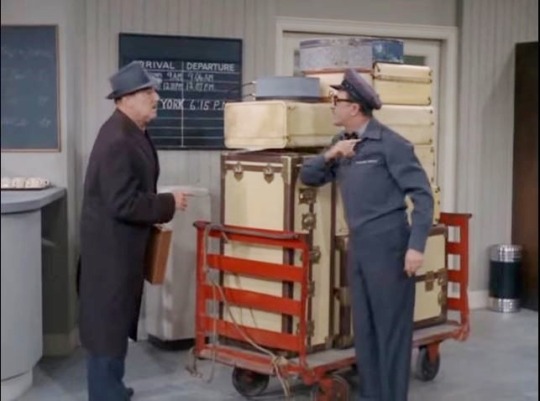
“Lucy is a Process Server” (1964) ~ Charged with serving Mr. Mooney, Lucy tracks him to the Danfield Train Station.

“Main Street U.S.A.” (1967) ~ Lucy and Mr. Mooney arrive in the small town of Bancroft by train.
TOY TRAINS
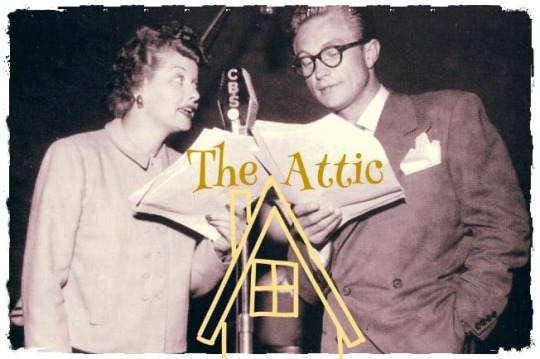
“The Attic” (1949) ~ An episode of Lucille Ball’s radio series in which George and Liz (Lucille Ball) clean out the attic and get locked in.
GEORGE: Hey, look at that! My wonderful electric train. LIZ: Well, I haven't heard you use that tone since you proposed. GEORGE: Oh, gosh, I haven't seen this train in years. LIZ: Well, you certainly have no use for it now. Out it goes. GEORGE: Take your hand off that box! It stays! LIZ: Oh, George, don't be silly! GEORGE: Now, who's being silly? That train doesn't leave this house. LIZ: Now, that's being practical. There's nothing as useful as an electric train. In fact, we should get another one for me. We can race them every night before we go to bed! GEORGE: Yeah. I guess you're right. Out it goes. LIZ: I'll let you keep your train if you let me keep my corsage collection. GEORGE: It's a deal!
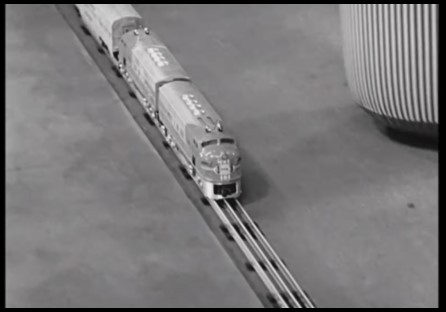
LUCY: “Look out for the Super Chief! Woo Woo!”
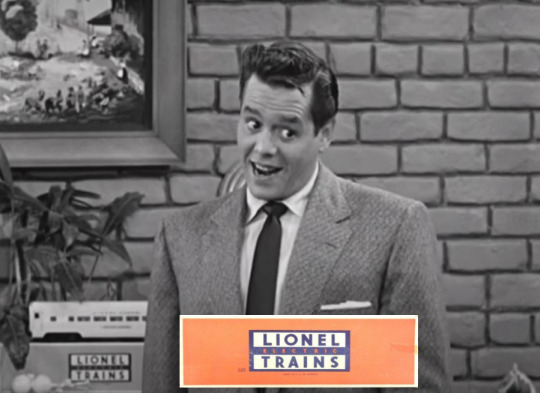
“The Ricardos Change Apartments” (1953) ~ Lucy fills the apartment with Little Ricky’s toys, including a Lionel Electric Train Set, to convince him they need a larger apartment.

“Little Ricky Gets Stage Fright” (1957) ~ Little Ricky is discovered playing with his Keystone Toy Railroad, a wooden train set made by the Keystone Manufacturing Company. The box is tucked under the bed.

“The ‘I Love Lucy’ Christmas Show” (1956) ~ Lionel Trains are under the Christmas tree for Little Ricky.
“My behind-the-scenes memoris are just the toys on the set. The writers, Madelyn and Bob, gave me a Lionel Train set and that was a real big treat for me as a kid.” ~ Keith Thibodeaux (Little Ricky)
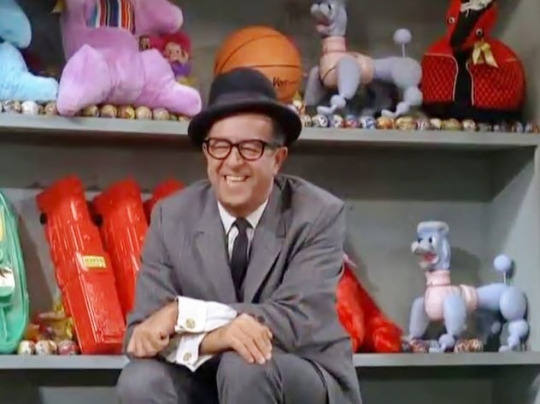
“Lucy and the Efficiency Expert” (1966) ~ Oliver Kasten (Phil Silvers) sits in front of red blow mold locamotives at the Grantland Toy Factory where Lucy is employed on the production line.
THE SUBWAY

“Tennessee Ernie Visits” (1954) ~ Ernie explains the subway.
ERNIE: I asked a fella how to get to the Rickerdos'. Well, he said, "Take the subway." Well, he pointed over there to a hole in the ground with some steps a-going down in it. I went down in there, and do you know what I saw? A bunch of people a-standing there looking in a ditch. Well, here come two streetcars hooked up together. All that bunch of people come a-steamin' up there pushed me through that door, shut it up, and we took off like a scalded gander. Well, sir, we drove and drove and drove and do you know what? RICKY: What? ERNIE: That driver never got that thing out of that hole.
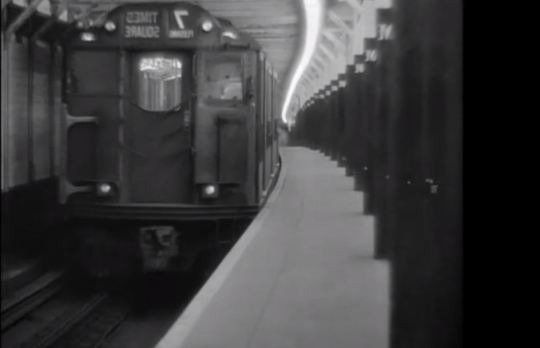
“Lucy and the Loving Cup” (1957) ~ When Lucy gets a loving cup stuck on her head, she must take the subway to Brooklyn to get it off. The episode features establishing footage of the New York Subway trains, although the footage was reversed.
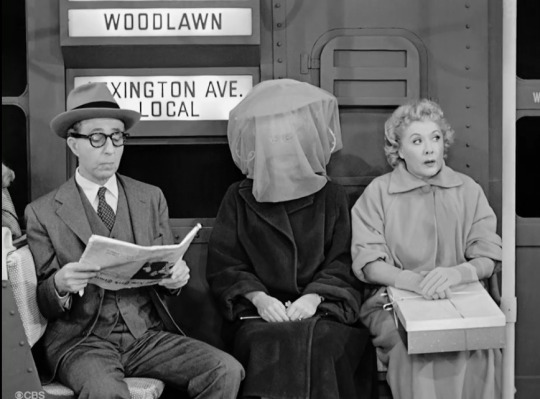
The subway car was recreated on the Desilu soundstage in Hollywood.
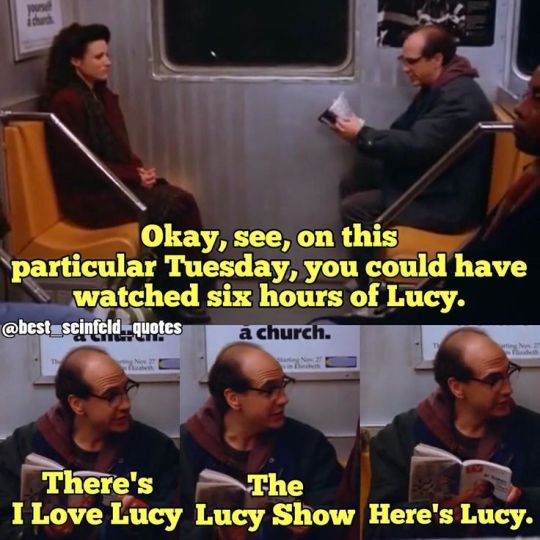
#Train#Locamotive#I Love Lucy#Railroad#Railway#Lucille Ball#Desi Arnaz#Subway#Vivian Vance#William Frawley#Seinfeld#The Lucy Show#Train Station#Grand Central Station#depot#Tennessee Ernie Ford#Phil Silvers#My Favorite Husband#Little Ricky#Keith Thibodeaux#Lionel Trains#Santa Fe Railroad#Union Pacific Railroad#Lady on the Train#Frank Nelson#Gale Gordon#Fred MacMurray#Forever Darling
4 notes
·
View notes
Text
The Sky's the Limit (1943) Review
The Sky’s the Limit (1943) Review
Fred Atwell sneaks away from his famous squadrons personal appearance tour for a few days to live a normal life, as a normal man way from any attention. It doesn’t take long for him to fall for Joan Manion who has no idea who he really is. ⭐️⭐️ (more…)
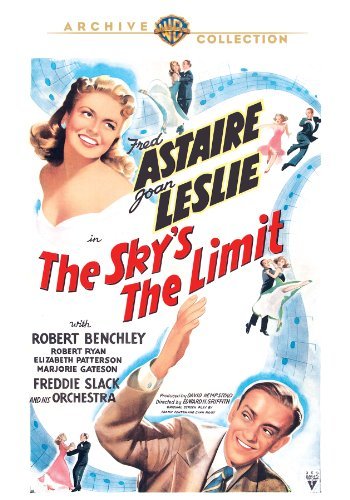
View On WordPress
#1943#Bobby Barber#Brooks Benedict#Comedy#Edward H. Griffith#Elizabeth Patterson#Eric Blore#Frank Fenton#Fred Aldrich#Fred Astaire#Freddie Slack#Georgia Caine#Joan Leslie#Joseph E. Bernard#Lynn Root#Marjorie Gateson#Musical#Review#Robert Andersen#Robert Benchley#Robert Ryan#Romance#Roy Bucko#The Sky&039;s the Limit
0 notes
Text



@tcmparty live tweet schedule for the week beginning Monday, June 13, 2022. Look for us on Twitter…watch and tweet along…remember to add #TCMParty to your tweets so everyone can find them :) All times are Eastern.
Tuesday, June 14 at 8:00 p.m. HOW TO MARRY A MILLIONAIRE (1953) Three models pool their resources to rent a posh penthouse in hopes of snaring rich husbands.
Saturday, June 18 at 3:45 p.m. 4 FOR TEXAS (1963) Double-crossing outlaws go straight and become rival saloon owners.
Sunday, June 26 at 10:00 p.m. TAXI DRIVER (1976) A loner becomes fixated on a teen prostitute.
#schedule#jean negulesco#betty grable#marilyn monroe#lauren bacall#david wayne#rory calhoun#cameron mitchell#alex d'arcy#fred clark#william powell#robert aldrich#frank sinatra#dean martin#anita ekberg#ursula andress#charles bronson#victor buono#richard jaeckel#mike mazurki#jack elam#arthur godfrey#classic movies#classic film#turner classic movies#live tweet#1950s#1960s#martin scorsese#robert de niro
45 notes
·
View notes
